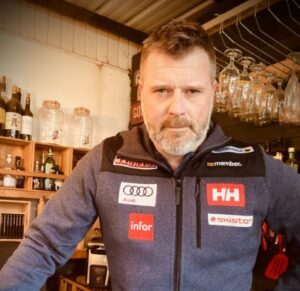

Eric Salo is a transformational business strategist, management consultant, and leadership coach. Eric Salo specializes in resolving complex business challenges to generate rapid, sustainable growth by aligning teams to their purpose.
Growth is the mandate for business leaders during the coming decade.
For the past 30 years, efficiency — cuts, control, and caution — was the path to financial gains. Cutting the way to growth is, and never was, viable in the long term. In the coming ten years, that approach will underperform one geared to productivity.
The difference between the two is running in-place versus climbing higher. Efficiency aims to get the same result with less input. On the other hand, the goal of productivity is to create bigger results from the same resources.
Retooling to be more productive is a transformational effort. Regardless of industry, productivity-oriented companies will emerge more relevant, responsive, and resilient competitors. And transformational CEOs will deliver more growth than their efficiency-minded peers.
The work starts with retooling teams to generate insights about and on behalf of customers. Along the way, executives will cultivate leadership, encourage creative dialogue, and engender a tolerance for ambiguity — which is often an opportunity disguised as a risk. The transformation is complete when those qualities are ingrained in company culture.
Improving efficiency is analytical — a spreadsheet exercise, whereas increasing productivity is a creative process. So that transition entails a complete change in mindset, behaviors, and skills.
From a strategic perspective, leadership is crucial to any far-reaching change. Tapping into the hearts and minds of people is essential. That job involves both refining tried-and-true leadership skills and adding new ones.
From a tactical viewpoint, future growth involves making two foundational changes:
And from a historical perspective, assessing the promise and peril of the past 25 years highlights what is crucial during the next ten.
Throughout the Digital Revolution, every high-impact “digital disruption” has done the same thing: it has created more discretionary time. Armed with that insight, transformational CEOs will focus on innovation efforts that free up customers’ and employees’ time.
The retail industry provides lots of insight into the downside of being unresponsive to demands on customers’ time. Waldenbooks is a perfect example.
The fundamental disconnect was that the company operated as a bookseller, while their customers were not book-buyers — they were readers. So it focused on internal measures of efficiency (sales per unit, for example) instead of improving its customers’ productivity (increasing reading time).
To buy a book from Walden, customers had to drive to the store, find parking, walk to the store, browse dozens of racks to locate the book they want, chase down a salesperson for help, wait in line to pay, walk back to the car, and drive home.
Despite those inconveniences, at its peak, Walden had more than 1,200 stores and operated in all 50 US states. The business model was efficient for Waldenbooks, so they stayed the course. As a result, in 2004, ten years after Amazon.com launched, the company, citing efficiency goals, was rebranded to Borders and downsized. Focusing on efficiency did not turn things around. The company liquidated in 2011.
Because of the demands imposed on a book buyer’s time, it took less than fifteen years for that business model to be rendered obsolete. If the company had focused on giving readers (its customers) more time to read, that fate might have been avoided.
Productive growth starts with two simple questions:
Create absolute clarity on the answer to the first question because that is why any organization exists: its purpose. Then minimize, or better, eliminate anything that taxes customers’ time while fulfilling that purpose.
Employees should get the same treatment. Transformational CEOs will remake their organizational structures and streamline processes to free up internal partners from mindless, time-wasting tasks.
Since growth runs through the sales team, their productivity has to be a top priority. Sales organizations have to become more data-driven, less bureaucratic, and, on behalf of customers, productivity-minded.
The goal of reworking sales processes and systems is to do for salespeople what Amazon did for book readers—give them more time to sell. And starting that transformation doesn’t require months of planning and a big budget.
A straightforward example comes from the insurance industry. As low-cost, online options have increased, sales conversion rates have declined. In an attempt to offset that impact, the frontline sales team at one agency responded with an efficiency-minded effort: they increased their cold-calling.
But agency leadership tackled the issue from a productivity perspective. They started by reassessing their purpose in the marketplace. The conclusion was that the agency adds value by managing claims to the benefit of both carrier and client—not by selling policies. So the disconnect became apparent: Clients buy policies based on price, not the expectation of dealing with a claim.
The actionable insight was to focus sales efforts on prospects that had experienced a prior claim. They already understand the value of having expert claims support; they do not have to be sold on it. They are also prime candidates for cross-selling, adding coverage, and providing referrals.
Identifying those prospects was easy and did not require a CRM system implementation to produce an immediate improvement in conversion rates.
It is just a start, but by stepping back to evaluate its purpose in the marketplace, the agency was able to improve sales productivity by focusing on prospects that placed a high value on its core service, not just the price of a policy.
Change is not easy; it is necessary. Transformational CEOs build high-performance teams by energizing others, helping them to see opportunities, and clearing obstacles to change.
Making an organization-wide transition from being efficient to being productive is not just the opportunity; for most companies, it is an existential necessity.
Nonetheless, most urgent transformational efforts do not deliver expected results or, worse, fail outright. This one, too, is apt to stall in the space between seeing the opportunity and realizing it—the leadership gap.
There is no better way to narrow that gap than by increasing the number and quality of leaders in the organization. In productive cultures, leadership is present throughout the organization. So, it’s obvious why developing and retaining high-quality leadership talent remains at the top of the list of challenges facing CEOs.
Knowing what needs to be done—giving customers time back and becoming more productive—is only 25% of the battle. Doing what needs to be done is what matters.
In a productive leadership environment, new ideas are welcomed and challenged as part of building a consensus. And action is taken on the best of them. Businesses with more leaders have a clear competitive advantage. Cultivate them.
Then turn them loose on developing innovative answers to the preeminent business question of the decade ahead: “Instead of taking their time, how might we give people time back?” – Eric Salo







© THE CEO PUBLICATION 2021 | All rights reserved. Terms and condition | Privacy and Policy